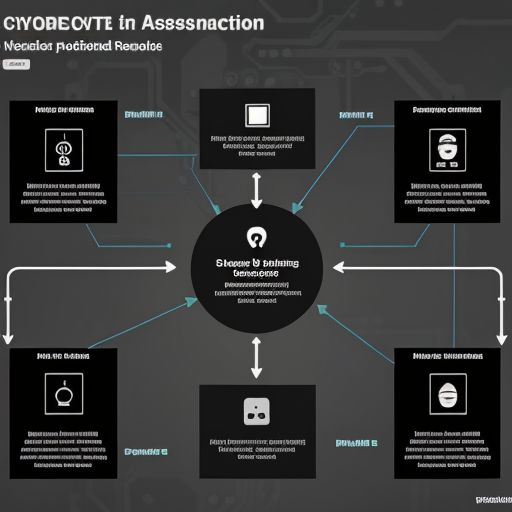Imagine this: your business, bustling with activity, relies heavily on its digital infrastructure. Suddenly, a cyber attack cripples your systems, halting operations and compromising sensitive data. The consequences are far-reaching – financial loss, reputational damage, and legal ramifications. This scenario, while daunting, highlights the critical importance of risk assessment in today’s digitally-driven world.
What is Risk Assessment In Cyber Security?
In essence, cyber security risk assessment is a proactive process of identifying, analyzing, and evaluating potential threats and vulnerabilities that could exploit weaknesses in your information systems. Think of it as a health check-up for your digital assets, identifying vulnerabilities before they become major problems.
Why is Risk Assessment Crucial?
Risk assessment forms the cornerstone of a robust cyber security strategy. Here’s why it’s so vital:
- Proactive Security: Instead of reacting to incidents, you’re anticipating and mitigating risks before they materialize.
- Resource Optimization: By understanding your vulnerabilities, you can prioritize security measures and allocate resources effectively.
- Business Continuity: A well-defined risk assessment plan helps minimize downtime and ensures business continuity in the event of a cyber attack.
- Regulatory Compliance: Many industries have regulations requiring businesses to conduct regular risk assessments.
security.hanawaterbury.com/wp-content/uploads/2024/07/risk assessment-668b9a.jpg" alt="Cyber Risk Assessment" width="512" height="512">Cyber Risk Assessment
Diving Deeper: Key Components of Risk Assessment
1. Asset Identification: Knowing What to Protect
The first step involves identifying your valuable assets – data, systems, applications, and even physical infrastructure. Ask yourself: What information is most critical to your operations? What systems, if compromised, would cause the most disruption?
2. Threat Assessment: Identifying Potential Dangers
Here, you’ll identify potential threats to your assets. These could include:
- External Threats: Hackers, cybercriminals, nation-state actors
- Internal Threats: Malicious insiders, accidental data leaks
- Environmental Threats: Natural disasters, power outages
3. Vulnerability Assessment: Pinpointing Weak Spots
This step involves analyzing your systems and processes to identify weaknesses that attackers could exploit. These vulnerabilities might be:
- Technical: Outdated software, weak passwords, unpatched systems
- Human: Social engineering, phishing scams, lack of security awareness
4. Risk Analysis: Evaluating the Impact
Now, you’ll assess the likelihood of each threat exploiting specific vulnerabilities. This involves analyzing the potential impact on your business, considering factors like:
- Financial Impact: Loss of revenue, recovery costs
- Reputational Damage: Loss of customer trust, brand damage
- Legal and Regulatory Consequences: Fines, lawsuits, compliance issues
5. Risk Mitigation: Taking Action
Based on your analysis, you’ll develop a plan to mitigate risks. This may involve:
- Implementing Security Controls: Firewalls, intrusion detection systems, anti-malware software
- Employee Training: Educating staff on security best practices
- Data Backups and Recovery Plans: Ensuring business continuity
Frequently Asked Questions About Risk Assessment In Cyber Security
What are the different types of cyber security risk assessments?
There are several approaches, including:
- Quantitative Risk Assessment: Assigns numerical values to risks, allowing for cost-benefit analysis.
- Qualitative Risk Assessment: Uses descriptive terms (high, medium, low) to categorize risks.
- Semi-Quantitative Risk Assessment: Combines elements of both quantitative and qualitative approaches.
How often should risk assessments be conducted?
The frequency depends on factors like your industry, business size, and the sensitivity of data handled. However, it’s generally recommended to conduct risk assessments at least annually, or whenever significant changes occur in your IT environment.
What tools can help with cyber security risk assessments?
There are various tools available, ranging from free online resources to comprehensive software solutions. These tools can assist with tasks like vulnerability scanning, risk analysis, and reporting.
Conclusion
In the ever-evolving landscape of cyber threats, risk assessment is not a one-time activity – it’s a continuous process. By embracing a proactive approach, businesses can significantly strengthen their cyber security posture and protect their valuable assets. Remember, a secure digital environment is essential for success in today’s interconnected world.
We encourage you to share your thoughts and experiences with risk assessment in the comments below. Let’s learn from each other and build a safer digital future together!
